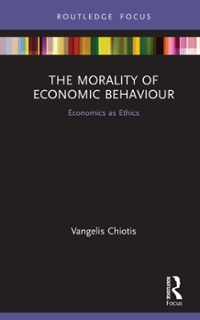Part 2. Answer 5 of the following 6 questions. Each correct answer is 11 points. 1. What will happen to the equilibrium price and quantity in the fresh seafood market if each of the following events occur: (a) a scientific report is issued saying that fish contains mercury, which is toxic to humans; and (b) the price of diesel fuel used in fishing fleets falls significantly? 2. Suppose market demand and supply for honey are given by: Qd - 40 - 2 P; Qs - -10+3 P; where Qs is quantity supplied, Qd is quantity demanded, and P is the price per kg. a) Find the equilibrium price and quantity. b) Explain what happens if the government imposes a subsidy on honey to encourage its consumption. You do not need to solve numerically. c) Does it matter if the subsidy is given to producers or consumers? 11The current price of a share of a particular stock listed on the New York Stock Exchange is $39. The following probability distribution shows how the price per share is expected to change over a three-month period: Stock Price Change ($) Probability 0.05 0.10 0.25 + 0.20 +2 0.20 +3 0.10 +4 0.10 a. Construct a spreadsheet simulation model that computes the value of the stock price in 3 months, 6 months, 9 months, and 12 months under the assumption that the change in stock price over any 3-month period is independent of the change in stock price over any other 3-month period. b. With the current price of $39 per share, simulate the price per share for the next four 3-month periods. What is the average stock price per share in 12 months? What is the standard deviation of the stock price in 12 months? C. Based on the model assumptions, what are the lowest and highest possible prices for this stock in 12 months? Based on your knowledge of the stock market, how valid do you think these prices are? Propose an alternative to modeling how stock prices evolve over 3-month periods.3. Suppose the oil industry in Utopia is perfectly competitive and that all firms draw oil from a single (and practically inexhaustible) pool. Assume that each competitor believes that it can sell all the oil it can produce at a stable world price of $10 per barrel and that the cost of operating a well for one year is $1,000. Total output per year (Q) of the oil field is a function of the number of wells (n) operating in the field. In particular, Q = 500n - n2 and the amount of oil produced by each well (q) is given by q = Q = 500 - n (a) Describe the equilibrium output and the equilibrium number of wells in this perfectly competitive case. Is there a divergence between private and social marginal cost in the industry? (b) Suppose now that the government nationalizes the oil field. How many oil wells should it operate? What will total output be? What will the output per well be? (c) As an alternative to nationalization, the Utopian government is considering an annual license fee per well to discourage over-drilling. How large should this license fee be if it is to prompt the industry to drill the optimal number of wells?4. Provide a hypothetical payoff matrix for Case 1. From the following payoff matrix, where the Study 11-2 in this chapter. payoffs are the profits or losses of the two firms, determine (a) whether firm A has a dominant 5. From the following payoff matrix, where the strategy, (b) whether firm B has a dominant payoffs (the negative values) are the years of strategy, and (c) the optimal strategy for each firm. possible imprisonment for individuals A and B, determine (a) whether individual A has a dominant Firm B strategy, (b) whether individual B has a dominant strategy, and (c) the optimal strategy for each Low Price High Price individual. (d) Do individuals A and B face a prisoners' dilemma? Low Price (1, 1) (3, 21) Firm A High Price (21, 3) (2. 2) Individual B 2. From the following payoff matrix, where the Confess Don't Confess payoffs are the profits or losses of the two firms, determine (a) whether firm A has a dominant Confess (25, 25) (21, 210) strategy, (b) whether firm B has a dominant Individual A strategy, (c) the optimal strategy for each firm, and Don't Confess (210, 21) (22, 22) (d) the Nash equilibrium, if there is one. Firm B 6. Explain why the payoff matrix in Problem 1 indicates that firms A and B face the prisoners' Low Price High Price dilemma. Low Price (1, 1) (3, 21) 7. Do firms A and B in Problem 2 face the prisoners Firm A dilemma? Why? High Price (21, 3) (4, 2) *8. From the following payoff matrix, where the affe and B










